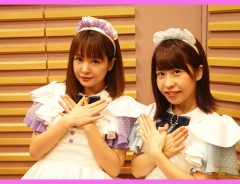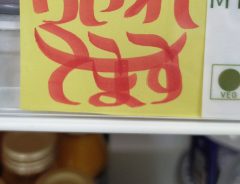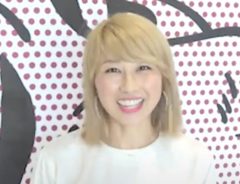
Source: YouTube: "英語 vs 日本語 アメリカ人に通じないカタカナが多すぎ!!|違いすぎ!英語の発音|英語 リスニング|英語の勉強法|TOEICの勉強|オンライン英会話|"
Why Japanese People: how Westerners struggle with katakana borrowed words in Japanese
- Tags:
- BilingualBaby / Japanese language / katakana / YouTuber
Related Article
-

Japanese Voices: @17 no Gokitaku Shimasenka? #25
-

Japan offers more proof that cats are liquid
-

Tokyo grocery’s signs look like Hindi to shoppers even though they’re in Japanese
-

Famous YouTuber Bilingirl Chika opens online salon after suffering serious cyberbullying
-

Clay artist crafts Inteleon figure to be their Pokémon cup ramen assistant
-

“Funny Cool” Japanese text tee makes impact at Milan runway show, amuses Japanese Twitter


Japanese ain't easy. Any Westerner who has studied for an extended period of time can tell you all about the trials and tribulations of becoming literate and fluent. First of all, Japanese syntax and English syntax are actually quite different. While English grammar follows an SVO (subject-verb-object) pattern, Japanese is mostly SOV. While this difference may sound straightforward, more complicated sentences quickly become challenging to understand.
Moreover, additional peculiarities often obstruct a Westerner's comprehension. Japanese tends to omit the subject on the basis it is understood via the context. Also, a person's or speaker's sex is not necessarily made explicit. This causes difficulties when translating certain texts into English, which often requires non-gender-neutral pronouns to sound natural. And the list goes on and on.
However, I haven't even touched on the written system, which is composed of phonetic hiragana and borrowed Chinese symbols referred to as kanji. While hiragana consists of 46 base characters, it can be memorized in a week or two’s time. Kanji, on the other hand, is a life-long pursuit, even for native speakers. Incredibly difficult for foreigners, the abundance of homophones in the Japanese language essentially necessitates the use of these complex symbols to convey meaning precisely.
The trouble with katakana
Paradoxically, katakana, a phonetic system for foreign borrowed words, is surprisingly overwhelming for students to master. Applied to foreign words, katakana essentially breaks down the vocabulary item into distinct phonetic sounds congenial to the Japanese ear. Yet, this sleight of hand often confuses Western speakers, myself included.
On their channel, BilingualBaby tackles this challenging issue in a fun way. Have a look:
ブレスト “buresuto”
This first katakana word sounds like it could end in litigation if used around the office.
Understandably, BilingualBaby's Aisha was surprised to hear “buresto” being thrown around her work. Sounding like the English word “breast,” she didn’t know what to say when someone asked if she wanted to “ブレストする,” “Do you want to ‘breast?’’’ Hmmm, maybe not.
Of course, she eventually found out that the word really means to “brainstorm.” As is sometimes done in Japanese, native speakers shorten each part of the compound word “brainstorming” in order to create this awkward portmanteau:
リスケ “Risuke”
Continuing with the not so subtle theme of office innuendo, the next katakana word on the list is "risuke," sounding like the French borrowed word "risqué.” Used by English speakers, “ risqué” implies some type of sexual impropriety and is another risky word to use around the office. So when Aisha heard her coworkers use it, she thought they were describing a type of risk or risqué behavior. It took her a while to understand that the word meant only to "reschedule." Not so dangerous sounding after all.
ハウリング “hauringu”
The next term congers up images werewolves and the like. Sounding like the word "howling," Aisha could barely stop from laughing when her senior asked "誰かがハウリングしている?", "Is someone 'howling'" over a Zoom call. Yes, there's a wolf on the other line.
Sure enough, it was just a technical problem. As everyone has experienced before, there was an echo on that particular conference call. Werewolves aside, Aisha's boss was just asking "Is someone's audio echoing?"
マンツーマン “mantsuuman”
This is a phrase that other English teachers living in Japan likely hear daily. "Mantsuuman" is the Japanese phonetic version of the phrase "man to man." However, it is used quite differently in Japan. While Aisha originally pictured two men having a "heart to heart" talk, the phrase is actually used like "one to one." In the case of ESL teachers, "mantsuuman" lessons are private lessons between the student and the instructor.
Aisha highlights a few more confusing phrases as the video winds to an end. Indeed, there is a lot to remember when learning Japanese. However, when it comes to katakana, probably the best advice for native English speakers is to approach these borrow words as separate, uniquely Japanese vocabulary items that must be memorized without referencing the original term.
For more talk about katakana and life in Japan, check out more of BilingualBaby’s videos on their YouTube channel.